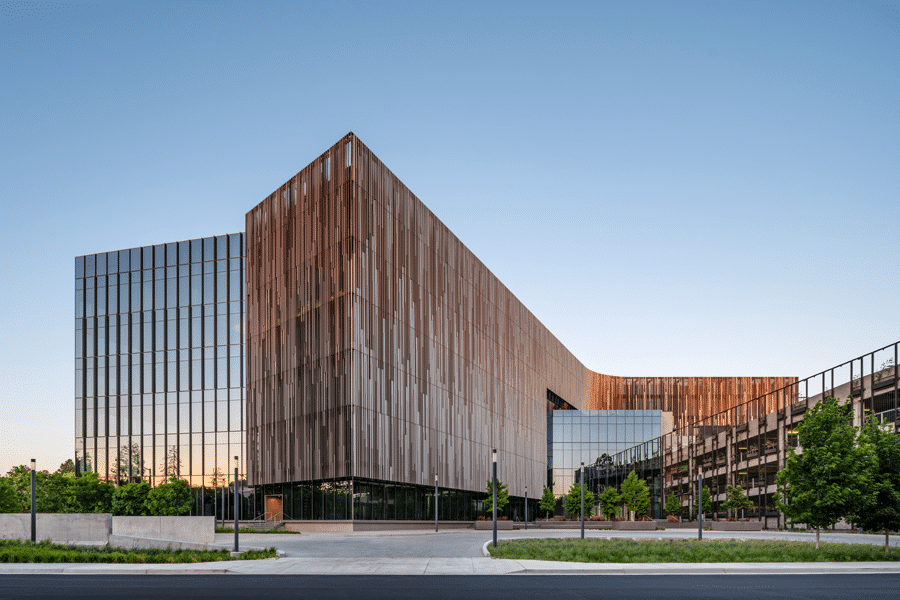Picture the scene. When their underground home is threatened by a life-threatening flood, tens of thousands of ants gather together and clamber on top of each other, creating a seething, ascending column, up which their kin climb to safety.
This scenario is from the 1998 animated movie “Antz,” but it reflects the sort of cooperative and collective behavior that takes place in the natural world among colonies of ants, bees and termites—behavior that serves each species well.
Engineers and technologists have observed swarm activity, wishing to replicate for the benefit of humanity that which serves the animal kingdom so well.
Among other things, such research has led to the development of miniature, near-autonomous robots that work together, but also independently, and with minimal need for input from a centrally located operator. This is called swarm robotics.
Collaboration toward a common goal
Roboticists are working to create teams of tiny robots that can monitor equipment and construction schemes in hostile environments; some have even suggested such robots can build structures where human beings cannot, such as in space.
Researchers at the Boston-based Wyss Institute in the US are developing robotic systems and algorithmic approaches “to make artificial swarms of robots that collaboratively work together toward a common goal.”


Bluebeam Resource Hub
Browse case studies, watch webinars, and see what’s new with Bluebeam.Wyss technicians have created a collective of 1,024 such robots, which they say can be programed to exhibit complex swarming behaviors, such as foraging, and what the team describes as “firefly-inspired synchronization,” while a user can interact with the swarm as a whole, effectively programming the robots and switching them on and off, regardless how many robots there are.
Meanwhile, swarms of self-organizing micro-robots are being studied by teams from the European Molecular Biology Laboratory in Barcelona and the University of Bristol’s Robotics Laboratory.
Sabine Hauert, joint project leader at the Bristol Robotics Laboratory, says that by using infrared signals the mini-robots can communicate with each other, gradually building up into larger swarms and exploring their surroundings.
Hauert told the Institute of Mechanical Engineering that the exciting aspect of the team’s work was that these shapes were fully self-organized: “That means there’s no leader in the system. We haven’t given them a grand plan of a shape to create but those shapes emerge in quite a repeatable manner, just based on these simple rules.”
Putting theory into practice?
So how might such robot swarms be used in construction? For an industry that lags behind others when it comes to using technology, the sector could potentially be a major beneficiary of swarm robotics in the future.
Much concerning swarm robotics to date has been centered around academic research. A team at Harvard University in the US has been working on a project called “Termes”—named after a genus of higher termites—which it says, “combines ideas from swarm intelligence and programmable self-assembly to create algorithms, theory and robot designs.”
The researchers said they had developed “a family of decentralised algorithms by which simple robots, without wireless communication or GPS/localisation, can co-operate to build large classes of user-specified structures by sensing and modifying their environment like termites.”
They had also developed a number of robotic platforms, “including block-carrying climbing robots that can build modular block structures much larger than themselves, and soft-material-depositing robots that can build in unstructured environments.”
It’s not hypothetical drawing board stuff, however. In the UK, Hypertunnel, a tunnelling engineering startup based in Basingstoke, claims to have made the world’s first underground structure built using swarm robotics—a six-meter long, two-meter tall and wide tunnel.
The firm deployed swarm construction methods relating to a digital twin of the tunnel. This saw a fleet of “hyperBot” robots enter the ground via a series of HDPE pipes shaped into an arch. The robots then 3D-printed the tunnel shell by installing construction material straight into the ground.
To infinity and beyond
And while some are scoping out the potential for swarm robotics down here on earth, others are looking to the stars.
As part of a competition organised by NASA titled the “3D Printed Habitat Centennial Challenge,” the brief of which was to construct a habitat on Mars capable of supporting and enabling four astronauts to live and work for one year, Hassell Architects proposed what it called a “modular swarm strategy” to deliver the required accommodation.
In a white paper, Hassell said: “The collective aim of the swarm will be to construct a compression-only shell structure that will protect a series of pressure retaining, prefabricated living pods.”
The result of Hassell’s research is what it calls “an ecosystem of robot assemblies that are flexible to adapt according to any potential process delays or failures within the construction schedule.”
Hassell said its approach was “neither a single-task construction robot nor an integrated robotized construction site, but something else entirely.” The core functionality of the swarm would “ensure that the robotic modules will have prolonged usage beyond the internal build phase.”
Security concerns
Since it is still very much a nascent technology, swarm robotics need to overcome certain challenges to be more widely accepted and used across construction, setting aside the industry’s slow take up of technology in general.
According to Leotronics, a robotics developer with manufacturing facilities in Slovakia, the reliability of swarm robots is a concern. “Natural swarms operate with the assumption that individual swarm members can fail.” The failure of individual swarm members, Leotronics warns, “can increase operational costs and lead to security problems.”
Security is a sensitive issue, Leotronics says. “Swarm behavior can be influenced based on the information swarm members receive … and affected by changing the messages exchanged by the robots or by introducing false information into the swarm. Therefore, communication in the multitude must be encrypted.”
Scientists and engineers are aware of these problems and are working to solve them, but it is likely to be some time before we see the robotic equivalent of a murmur of starlings congregating above a construction site, ready to hoist materials into place. This doesn’t mean something like it won’t happen eventually. But the construction sector knows it has many other issues to grapple with around the subject of technology before it does.












